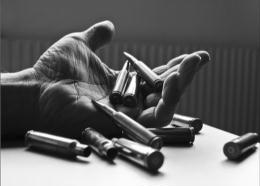

 The Accurate Reloading Forums
The Accurate Reloading Forums  THE ACCURATE RELOADING.COM FORUMS
THE ACCURATE RELOADING.COM FORUMS  Rifles
Rifles  Small Calibers
Small Calibers  GS HV 100gr .257 grain What Twist?
GS HV 100gr .257 grain What Twist?Go  | New  | Find  | Notify  | Tools  | Reply  |  |
| One of Us |
I'm ordering a barrel for another 257 STW. It will have a 28" carbon wraped barrel from ABS I plan to shoot the 100gr HV at > 4,000 fps. GS's web page recomend a 1:7.5 twist with 1:10 being the Min. Any coments about these recomendations ? They seam a little fast to me. DR B | ||
|
| one of us |
Dr B, One thing to bear in mind is that the application of the rifle also plays a role. If you will use it mostly for extreme range work, 1:10" is the way to go. For predominantly short distance work, out to 200 or so, 1:7.5 is the ticket and middle distance / normal hunting from point blank to 500, I would opt for 8 or 8.5. | |||
|
| One of Us |
Gerard Thanks for the reply. Would you please explain why the diffrent twist fo the diffrent ranges? DR B | |||
|
| one of us |
At long distances, the bullet should have the correct (lower) gyroscopic stability (gs) factor to allow it to nose over the bow of the trajectory. Too much gs and it will fly, spinning nose high, over the last part of the trajectory and impact with too high an angle of attack. The overturning moment created at impact will cause the bullet to tumble. Too much gs also creates other problems related to the vertical component of wind drift at extreme ranges as well as accentuating bullet imbalance, where it exists. Too little gs will cause tumbling in flight. The rule of thumb is to use a longer bullet or slow down the twist rate. Medium range hunting needs a higher gs (shorter bullet or tighter twist) because of the increased overturning moment at impact. The overturning moment is determined by the level of force generated at the centre of pressure towards the front of the bullet and the distance to the center of gravity of the bullet, as well as the offset of the two points from the line of flight. If the overturning moment is high enough to overcome the gs of the bullet, it tumbles on impact. Overturning moment increases with speed and gs increases as the twist rate goes up or as the bullet selected is shorter. The goal is to have enough gs to allow the bullet to transition from flight to tissue without wagging it's tail. Here the rule of thumb is to use standard twist rates and pick the bullet length to suit the job at hand. Close range work requires the highest gs of all because the overturning moment is highest due to the speed at which impacts occur. At the risk of stirring some controversy: With lead core bullets, the better choice for close range is the heavier bullet. It is slower and this limits the damage to the bullet on impact, allowing higher retained momentum and energy. With expanding monometal bullets, the better choice for close range is the shorter bullet. It is strong enough to deal with the high impact speed and gs is enhanced by the higher speed as well as the shorter bullet (or tighter twist rate). With monos one can engineer a good outcome. With lead core bullets, the variables are counter productive and you take your chances. Related topic. | |||
|
One of Us |
Whew, Did that explanation make anyone ELSE'S head hurt? Dang Gerard, can you "dumb down" your explanation a little? It's not that I don't believe you, it's just that I don't understand what the heck I just read! Sorry, I guess I'm a product of public (US) education! I don't mean to hijack the thread.... Si tantum EGO eram dimidium ut bonus ut EGO memor | |||
|
| One of Us |
The next step is that the answer should be broken down in itervals of 50 meters out to 500 meters, so we do not fall prey to where the parameter changes unexpectedly on us. Assuming you are geared with your rig to shoot out to 150 meters, and you have to take a shot at 200 meters, and the damn bullet tumbles on you. Life is complex, but it seems bullet mumbo jumbo must make place for practical experience, then our poor mortals have a chance too. Warrior | |||
|
| one of us |
I thought that was clear and not horribly technical. Let me try again: At long distances, the bullet should have a lower gyroscopic stability (gs) factor to allow it to nose over the bow of the trajectory. The rule of thumb is to use a longer bullet or slow down the twist rate. Medium range hunting needs a higher gs (shorter bullet or tighter twist) to better resist tumbling on impact due to the increased forces. The goal is to have enough gs to allow the bullet to initially penetrate into the tissue without wagging it's tail. Here the rule of thumb is to use standard twist rates and pick the bullet length to suit the job at hand (shorter bullets for bush and longer bullets for plains game). Close range work requires the highest gs of all because that is where the highest risk of tumbling on impact is. At the risk of stirring some controversy: With lead core bullets, the better choice for close range is the heavier bullet. It is slower and this limits the damage to the bullet on impact, allowing higher retained momentum and energy. With expanding monometal bullets, the better choice for close range is the shorter bullet. It is strong enough to deal with the high impact speed and gs is enhanced by the higher speed as well as the shorter bullet (or tighter twist rate). With monos one can design a bullet that complies with the wide variety of requirements. With lead core bullets, the variables are counter productive (make it heavier and it is more likely to tumble, make it shorter and it is more likely to shatter) and you take your chances. Chris, You should stay off this thread. It is about bullet length and twist rates, a topic you do not understand. Havn't you made a fool of yourself enough already?  Mistakes by Warrior in this thread = 1 | |||
|
One of Us |
Gerard, Huh? Do you mean me? How have I made a fool of myself? I don't understand how asking for clarification should mean I should stay away? You think I'm a troll? Si tantum EGO eram dimidium ut bonus ut EGO memor | |||
|
| One of Us |
Posting on behalf of Gerard who is away from home at present:
OWLS My Africa, with which I will never be able to live without! | |||
|
| One of Us |
This is what I call relentless subtle marketing for GSC bullets ... what a profound statement. What on earth is wrong with heavy lead-core bullets such as: 1. .284/175 gr Swift A-Frame? 2. .366/300 gr Swift A-Frame? 3. .416/400 gr Swift A-Frame? I do not understand what it means ... "and you take your chances" ? If there is any truth in the above statement, we should have thousands of unhappy customers in the US, or world-wide for that matter. What about the clever design principles in lead-core bullets? Partitioning, bonding, progressively thicker jackets and controlled expansion? The use of pure lead (without antimony) to flow better with the petals as they expand? All the above ensure very high weight retention ratios. The bullets shorten as they strike and the CG moves forward, resiting tumbling. So, where is the likeliness to tumble, hey? Warrior | |||
|
| One of Us |
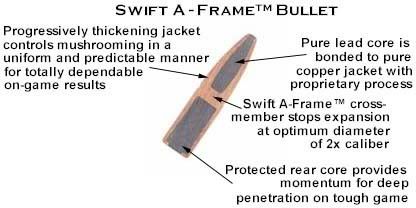 The message here is about ... "toatally dependable on-game results" ... and not about taking chances as a result of variables that are counter productive. In fact, the variables are so designed to give the hunter the best chance. Warrior | |||
|
| One of Us |
Hey Warrior, I see the truth in this now. | |||
|
| One of Us |
Bring the evidence and do not make blanket statements or act like a praise singer. Everything changes when a bullet strikes - in-air gyro is not the be-all and end-all; there are other more important factors that you are missing or simply refusing to admit and so you have to accuse me of not understanding. Warrior | |||
|
| One of Us |
I take it that you are not the officially appointed praise singer for rhino. I am no expert on ballistics but some simple principles are easy to see and understand and your post about heavy lead core bullets shows that you are no expert either. Rhino should fire you and appoint someone with better knowledge. You are as subtle as a sledgehammer and about as clued up on ballistics as one also. | |||
|
| One of Us |
It is all in the mind. You have everything buttoned-up. Swifts are tarnished and plaqued with failures, hey? Warrior | |||
|
| One of Us |
Ja Boet Warrior, even a novice like me can see you do not understand twist and length. Spend some time on the GS website and get an education. | |||
|
| One of Us |
More fables from the South African Art Alpin. What a scream.  ---------------------------------------------- "Serious rifles have two barrels, everything else just burns gunpowder." | |||
|
| One of Us |
400 nitro express, I see you own a wealth of knowledge about double rifles and history and old ammo and bullets. It is a pity that you have not kept up with modern developments and prefer to belittle where you could be constructive. Enlighten us with the reason for your remark concerning lead core bullets compared to turned copper bullets. I am sure it will be interesting to hear a well put technical reason for your position rather than just a snide comment. I am out of here for now we are doing a product development program this week and I look forward to reading your reply next weekend. | |||
|
One of Us |
Jagter/Gerard, No, it's OK, I wondered of course, but no problem. No offense taken. Si tantum EGO eram dimidium ut bonus ut EGO memor | |||
|
| one of us |
400 Nitro Express, Do you agree or disagree with the statements below. Both are for the same caliber and type of bullet construction, whatever it may be: 1. The longer a bullet is, the lower the gyroscopic stability becomes. 2. Lighter bullets are loaded to higher speeds than heavier bullets. If you decline to comment, I will take it that your insulting comment above is just so much unsubstantiated bluster and that you have no technical basis for that comment. Your choice. | |||
|
| One of Us |
Can anyone attest to where any of the above long-for-caliber bullets have failed the hunter as a result of its SF value? All of them are stable enough in air in the standard CIP specified twist rates. As we know, everything changes on impact, when the bullet shortens. .284/175 gr Swift A-Frame ... SD = .310 .366/300 gr Swift A-Frame ... SD = .320 .375/300 gr Swift A-Frame ... SD = .305 .416/400 gr Swift A-Frame ... SD = .330 Perhaps it would be interesting to see how a few of these bullets have performed on game. I will post some tomorrow, and then we can see how hunters have been taking their chances, hey? So bear this in mind ... "With lead core bullets, the variables are counter productive (make it heavier and it is more likely to tumble, make it shorter and it is more likely to shatter) and you take your chances. Warrior | |||
|
| one of us |
Chris/Warrior/Truvelloshooter, Nothing at all. When did I say there is anything wrong with them. You are throwing out red herrings again and picking an argument on a subject you do not understand. I will prove this by asking you the same two questions I asked 400 Nitro Express. I know you do not understand the bullet length/twist rate thing and your lack of a direct reply to these two questions will be the proof, but as you say yourself: Remember now, try to concentrate: 1. The longer a bullet is, the lower the gyroscopic stability becomes. 2. Lighter bullets are loaded to higher speeds than heavier bullets. Don't give us a thousand words, just answer Yes or No to each statement. As I must have said at least several dozen times (directly and indirectly, six times in this thread alone), the concern is tumbling on impact not during penetration. You should learn to read and comprehend correctly. You make mistakes so fast, it is difficult to keep track of them all.  Mistakes by Warrior in this thread = 5 400 Nitro Express, No reply yet, despite my PM to make you aware of my reply and question? | |||
|
| One of Us |
How much GS is enough? Define limits for bush, middle and long distance please to match the twist rates suggested. Make it practical so the novice can implement your suggestion. Warrior | |||
|
| one of us |
Chris/Warrior/Truvelloshooter,
I will make this easy for you. Answer to 1: a = Yes, b = No Answer to 2: a = Yes, b = No Pick 1a or 1b and 2a or 2b.  Mistakes by Warrior in this thread = 6 | |||
|
| one of us |
/ | |||
|
| One of Us |
Alf, Is it not so that the decay in spin (angular velocity) is negligible out to 500 yds. More so if we talk practical hunting ranges out to 300 yds. Forward velocity reduces much more due to air drag. Despite reductions in both forward & angular velocity, a bullet has settled or gone to sleep (thus more "stable") by around 200 yards, as opposed to 20 yds. So for this reason I believe that even a slow-twist 9,3 barrel (1-in-14") is quite adequate out to 200 yards. Pieter Olivier proved this with a GSC-FN bullet over more than 200 yards when he shot a Blue Wildebeest with perfect straight-line penetration, and that despite a terrible BC that FN's exhibit. Warrior | |||
|
| one of us |
/ | |||
|
| One of Us |
Agreed An over spun bullet travels with its nose up. Warrior | |||
|
| one of us |
Alf, Practical examples on game and in test media tell me otherwise especially where angled shots (high angle of incidence) is taken. I agree that high SF numbers are meaningless once the transition from flight to tissue is complete, but I am convinced that it is a factor in the actual transition of a bullet length or two into the tissue and while the bullet is changing shape due to the initially high decelerative forces working on it. I made the same mistake but, it is part of going forward in the process of learning. Bear in mind that high angles of attack can be the result of SF that is too high or SF that is too low. Too high a SF would be applicable in extreme range shooting where you correctly point out that the bullet could have a high angle of attack but still be gyroscopically stable at impact. Too low a SF would be applicable at shorter (hunting) range where the gyroscopic stability is too low to dampen the slow precession cycle. The result here is a bullet that has a high angle of attack at impact and, as the gyroscopic stability reduces and approaches a value of 1, the tendency of the bullet to tumble increases. The two points you mention are crucial in determining a correct transition from flight to tissue. In the second point one should add something: 1. Angle of attack value at impact 2. Geometry and deceleration forces( length to transverse moment of inertia ratio) These two important factors determine how the bullet transitions from flight to tissue and, if the transition is linear and the bullet is afforded that fraction of time to mushroom and/or develop the forces that will result in stable and linear penetration, the result is as we expect. Consider the effect of a tighter twist rate or a shorter bullet on point one. Both would aid in faster damping of both precession cycles, thereby reducing the angle of attack at impact. Both would increase the stability factor (SF) of the bullet and supports the observation that shorter mono bullets from a given rifle have a lesser tendency to tumble on impact. This allows more time for the bullet to mushroom and assume the properties that will promote linear penetration if it is a soft. In the case of a flat nosed solid, it allows time for the forces that promote shoulder stabilisation to develop, again promoting linear penetration. No matter how fast it happens, there is still a time factor to these events. Point two, geometry, is similarly positively influenced by shortening the bullet or increasing the twist rate. A shorter bullet has a lower polar moment of inertia. The overturning moment is reduced because the center of pressure is closer to the center of gravity and the higher SF of the shorter bullet/tighter twist is better able to resist the overturning moment that is generated. Again, more time is bought with the resultant better result described above. This is why I say that, for standard hunting application, a tighter twist or shorter mono bullet (with a higher SF number) will give better results. The transition is better and the bullet is set up for more linear and more stable penetration. The above is applicable to mono bullets and, regarding lead core bullets, I would like to add: Using shorter lead core bullets at close range carries the implication that the shorter (lighter) bullet would be loaded to higher speeds. Instead of having the advantages described above with monos, at short range the higher impact speeds will tend to shatter lead core bullets to a greater degree. This happens to both lead core softs and lead core solids. This is why I said: "With lead core bullets, the variables are counter productive (make it heavier and it is more likely to tumble, make it shorter and it is more likely to shatter) and you take your chances." The implication being that, where there is an advantage to be gained by going to a shorter bullet, it can be done with a mono while a lead core bullet will not allow this. I trust that 400 Nitro Express, who is shining by his apparent absence, may be lurking and thus be enlightened. Chris/Warrior/Truvelloshooter, You are too transparent. I know where you are going with this: You disagree that tighter twist rates deliver better results than slower twist rates. Your next step is to find something wrong with this "nose up" attitude of the bullet and then start some sort of argument from there. This is of no consequence at standard hunting ranges. The angle of attack that is generated cannot be larger than the difference between the line of sight and the launch angle. It is too small to be of any significance and is completely negated by the higher SF that always accompanies an "over spun" bullet. An expanding mono will transition well and, if a lead core bullet holds together sufficiently, the result is good also. Much worse is the angle of attack that results from too little SF and insufficient damping of the slow and fast precession cycles because this is always accompanied by a low SF. The bullet transitions badly and the result is:  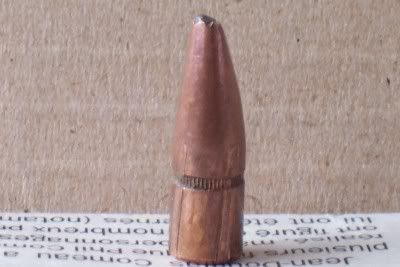  | |||
|
| one of us |
/ | |||
|
| One of Us |
Dr. B, I kind of lost track, did you find out what twist you need? Founding member of the 7MM STW club Member of the Texas Cull Hunters Association | |||
|
| one of us |
Alf, The other parameters can only be made to remain the same on paper. In practise, they never remain the same. Did you make these calculations or are they printed as you quote them? The muzzle SF numbers are about right but the 1000 numbers are wrong. They should be roughly 1.0, 1.4 and 2.0. Rifle Accuracy Facts P189/190: "You can see that as the bullet slows down on a long range trajectory the Mach number decreases and the moment coefficient increases. This means that gyroscopic stability decreases at long range and in some cases the effect may be great enough to cause a bullet to become unstable." There is no point in this discussion until we sort this point out. We will talk at cross purposes for the next 17 pages unless we are on the same page about this. | |||
|
| one of us |
/ | |||
|
| One of Us |
Thus there is nothing to worry about with these previously mentioned "long" bullets: .284/175 gr Swift A-Frame ... SD = .310 .366/300 gr Swift A-Frame ... SD = .320 .375/300 gr Swift A-Frame ... SD = .305 .416/400 gr Swift A-Frame ... SD = .330 Don't be bamboozeled in believing that you are taking your chances that these bullets are prone to tumbling. As we know, everything changes on impact, when the bullet shortens & the CG moves forward. I am using the .375 bore as an example in the context of the std 1-in-12" twist: Bullet -------------- Mass -------- Length Woodleigh PP ---- 235 gr ---- 25.73 mm Swift A-Frame --- 250 gr ---- 27.56 mm Swift A-Frame --- 270 gr ---- 30.48 mm Swift A-Frame --- 300 gr ---- 32.27 mm ---> Rhino ------------- 300 gr ---- 34.40 mm Northfork --------- 300 gr ---- 35.61 mm And it may just be that the longest bullet here is actaully the best performer, contrary to the statement ... "With lead core bullets, the variables are counter productive (make it heavier and it is more likely to tumble, make it shorter and it is more likely to shatter) and you take your chances." The shortest and stubbiest bullet would in fact be my very last choice for various other reasons. Here are some examples as to how the longest of the Swift bullets perform: 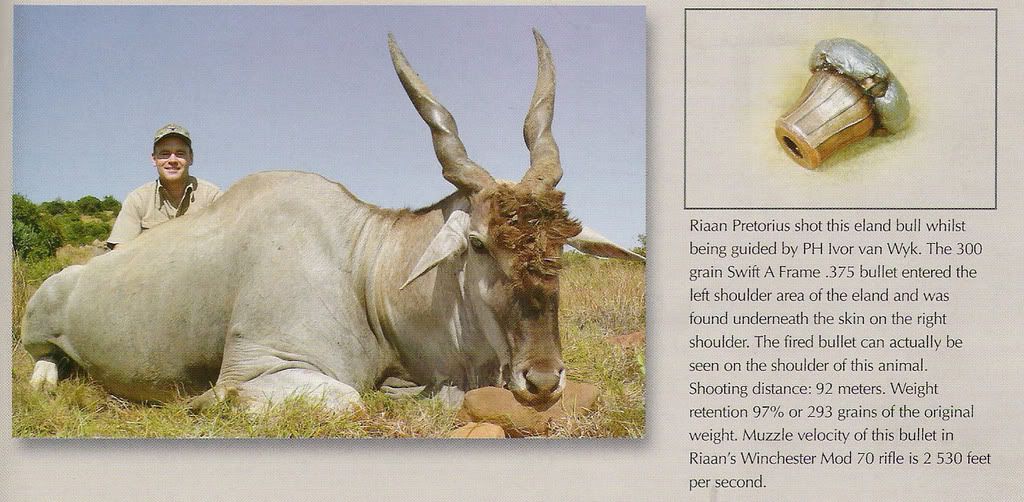 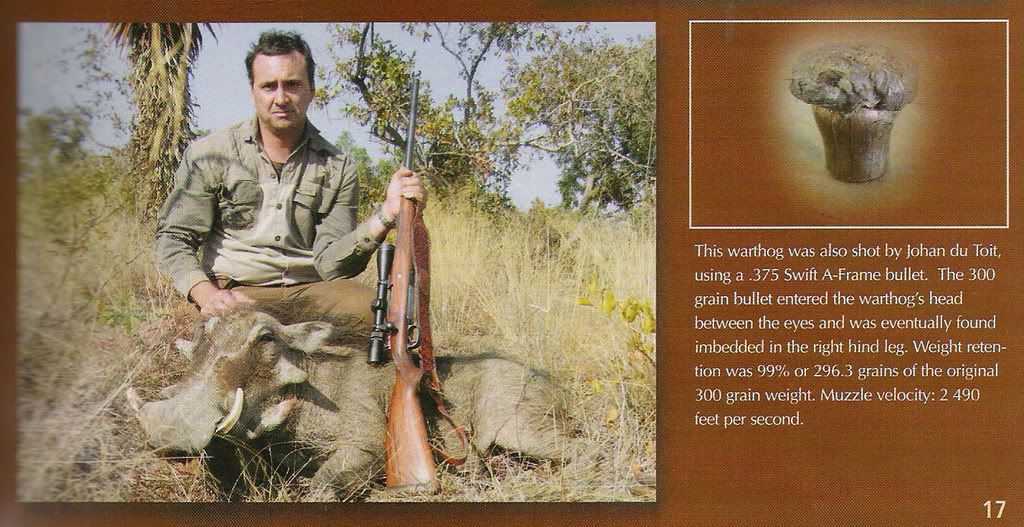 Warrior | |||
|
| One of Us |
This one is off Nortfork's site - the .375/300 gr bullet - the longest one (35.61 mm) of the bunch mentioned above. Looks like sterling performance to me.  Warrior | |||
|
| one of us |
Troll/Chris/Warrior/Truvelloshooter, The original question asked was about the GSC 100gr HV bullet. This is a m-o-n-o-m-e-t-a-l bullet. My answer was therefore applicable to m-o-n-o-m-e-t-a-l bullets. You brought up the examples of Swift bullets and Swift bullets are l-e-a-d c-o-r-e bullets. Additionally, the samples you mention and the picture examples you post are not of long for caliber bullets. Those are the normal length lead core bullets used in those calibers. Your calling them "long" bullets once again highlights your lack of a grasp on the subject. You confuse yourself and you should have heeded my advice:
Clearly you completely missed/failed to understand:
It turns out I was right when I said: "Your next step is to find something wrong with this "nose up" attitude of the bullet and then start some sort of argument from there." Once again you exhibit all the traits of a troll.  Mistakes by Warrior in this thread = 8 | |||
|
| One of Us |
Dear Gerard, You brought the lead-core bullet into argument, not me. I showed you the even longer NF bullet (35.61 mm) that performs well. I can show you an even longer one that does not tumble - the 380 gr Rhino bullet. It is 40.4 mm long and performs reliable on buffalo at close distance. Wanna see an example? I can show them - I have given you Doctari's comments before. I just take issue with what you said in your above statement. In particular the fact that users are taking chances with the heavier & thus longer lead-core bullets, as you did not tell the hole story what happens when the bullet deforms to a shorter length. Enough said, Warrior | |||
|
| One of Us |
"The attached picture is of a 380gr rhino bullet recovered from a buffalo (picture also attached), shot on the left shoulder and the bullet found just exiting the stomach in the groin area in front of the right back leg. The weight retention was 375gr exactly (98.7%). Just thought I would let you know that I will use nothing else on buffalo to back up my clients as not one of the buffalo ran more that 25 meters after the "Rhino" hit them. All my American clients were very impressed with these bullets." Rob Duffield Professional Hunter.  | |||
|
| One of Us |
Swift A-Frame --- 300 gr ---- 32.27 mm ---> Rhino ------------- 300 gr ---- 34.40 mm Northfork --------- 300 gr ---- 35.61 mm Rhino ------------- 380 gr ---- 40.4 mm They all perform suprisingly well !!! These long bullets. Warrior | |||
|
| One of Us |
Hey rhino Praise Singer Warrior, Didnt take you long to get around to pushing your rhinos again did it? I thought that Swift defence was just a smokescreen until you make a gap to push your own bullet again. Funny thing is that the normal length bullets all have nice evenly shaped mushrooms and the long rhino has this skew mushroom. Dont tell me you can not see that and why do you think that is? Normal length bullets are evenly mushroomed -- long for caliber bullet is skew??? You say that Gerard brought the lead core bullets into the argument. He also asked you
You going to answer that question or are you still short of some spark to a couple of cylinders? I would also like to know - why do you say the 300grain 375 bullets are long? That has been the traditional length and weight for 375 leadcore bullets for a helluva long time and you think they are long? How about trying to make your point with some 257 caliber examples which is what this thread is about originally. That should show you up to be even more rediculous. DOUBLE | |||
|
| Powered by Social Strata | Page 1 2 |
| Please Wait. Your request is being processed... |
|
 The Accurate Reloading Forums
The Accurate Reloading Forums  THE ACCURATE RELOADING.COM FORUMS
THE ACCURATE RELOADING.COM FORUMS  Rifles
Rifles  Small Calibers
Small Calibers  GS HV 100gr .257 grain What Twist?
GS HV 100gr .257 grain What Twist?

Visit our on-line store for AR Memorabilia

